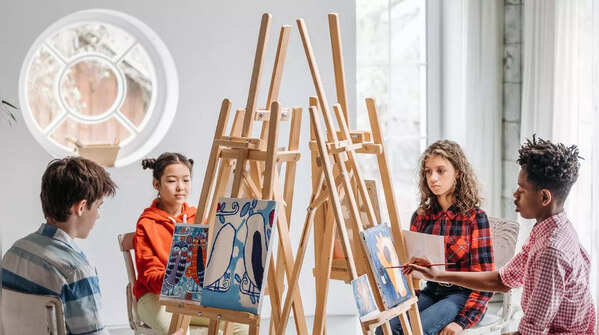6 reasons why Art education should be encouraged for children aged 5-12

Creativity and developement
When it comes to the decision of making children choose between Arts and a theoretical subject, most parents and teachers give an extra push towards theories where they believe that the child will ‘learn more’. Very few parents encourage and actively participate when it comes to Art education, creative fields, and the like. And so, when an early foundation of the Arts is not set, over time, the child feels that they lack creativity, imagination, and more.
And so, here we mention six reasons why Art education should be encouraged for children between 5-12 years of age.

The foundation of creativity
Art education lays the foundation for creativity, a skill that is important for both children and adults and in personal and professional life. And one cannot expect children to wake up one day when they are 15 or 18 and have creative flair without encouraging it when they were little.
For example, when you hand a little kid a piece of paper and some colours, and ask him to draw a scenery, one day he will create something that is off in colours, another day maybe the tree will be missing, but over, he will be able to add the perfect creative touch as he has been practising for a while.
And this foundation of creativity has to be set early on in life.

An early push towards expression
Art education gives children, and adults, the perfect medium to express themselves, Through dance, painting, sculpting, drawing, and whatnot, humans get a grasp of their expression and have an outlet to let their feelings out. And when started early, children who know how to express themselves, turn into emotionally mature, expressive adults who don't suffer from miscommunication.

Imagination
Books and arts are two beautiful mediums to fuel a little child’s imagination. And while children as young as 5 do not fancy books, a canvas where they can paint and draw whatever they like sounds enticing to them. And when the hands start moving on the canvas, and the mind starts thinking about things to paint, imagination and curiosity leap.
And when children fuel their imagination, they become successful adults who can articulate their thoughts and visualise what sits right and where better.

An additional skill for the future!
Art education gives children an additional skill that can be their hobby, or even their career in the future. And today, as people fear that AI will take up their jobs, leaving them unemployed, an artist is someone who can never be replaced. Be it the strings of a Sitar, or the Cubist lines of a painter, AI can never do what an artist can, and encouraging an artist from the start is extremely important.

Better motor skills
Art activities help children develop better motor skills, or to put it in simple terms, better coordination of hand-eye-mind. For example, when a child engages in drawing, painting, cutting, sculpting, dancing, etc, they need to be precise and certain with their hands as the slightest wrong move can ruin a painting, or destroy a sculpture. And so, when children start young, they start having a grasp on their movement and their coordination.

Best visual learning medium
Children are visual learners, and arts support this medium. When a child looks at colours or touches a painting, they notice the texture, the feel, how it stains their hand, how it pairs with another colour, and the like. And no one child has ever said - I learnt better by cramming that white and black become grey, instead of mixing the two colours myself’.
So when children get the hands-on feeling of paint, colour, texture, clay, and more, visual learning helps them over time.









